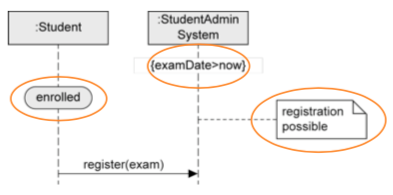Software Design
Table of Contents
Sequence Diagrams
Introduction
it’s a way to model interactions between objects
interaction specifies how messages and data are exchanged between objects
interaction partners: human (lecturer, admin) or non-human (server, printer, software)
interactions: conversation between people, message exchange between human and software, communication protocols, sequence of method calls in program, etc.
Basics
Interactions, interaction partners
a sequence diagram is 2D:
- horizontal axis: involved interaction partners
- vertical axis: chronological order of interaction
interaction: sequence of event specifications
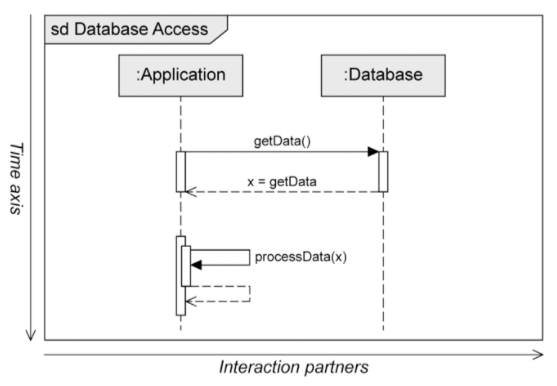
interaction partners are lifelines:
- head of lifeline is rectangle containing
object:Class - body of lifeline is vertical dashed line representing lifetime of associated object
Messages
message is defined via send and receive events
execution specification (optional):
- continuous bar
- used to visualize when interaction partner executes a behavior
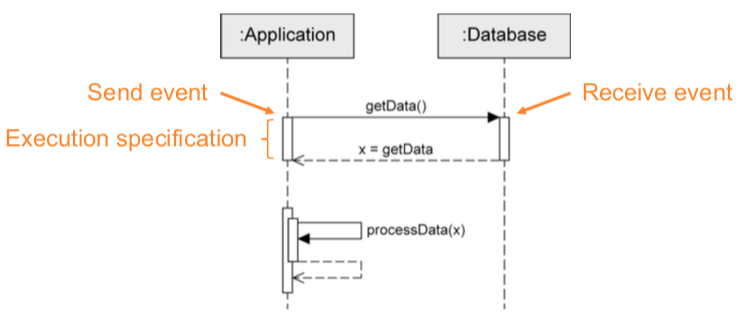
rules:
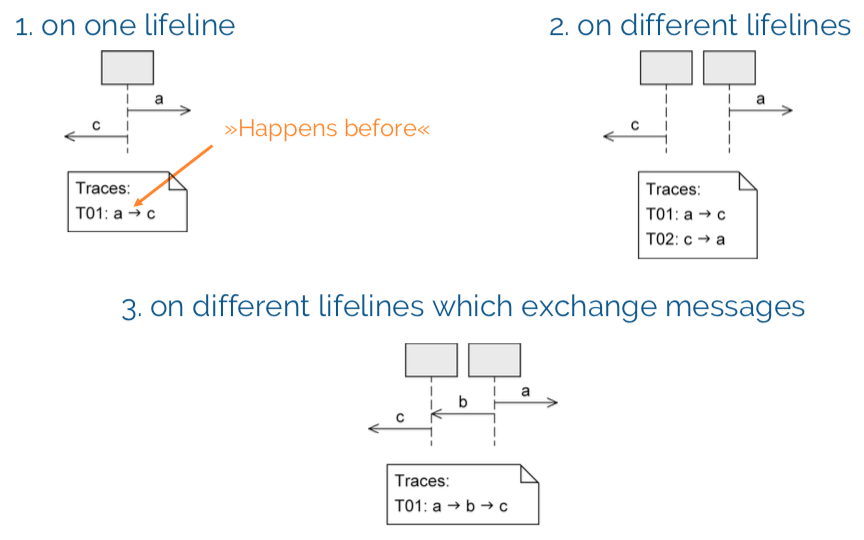
synchronous message:
- sender waits until it has received response message before continuing
- syntax:
msg(par₁, par₂)msg: name of messagepar: parameters
- notation:

asynchronous message:
- sender continues without waiting for response msg
- syntax:
msg(par₁, par₂) - notation:

response message:
- can be omitted if content and location are obvious
- syntax:
att = msg(par₁, par₂): valatt: return value assigned to variable (optional)msg: name of messagepar: parametersval: return value
- notation:

object creation:
- dashed arrow, arrowhead pointing to head of lifeline of object that’s being created
- keyword
new - notation:
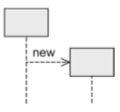
object destruction:
- object is deleted
- large cross at end of lifeline
- notation:

found message:
- sender unknown/not relevant
- notation:

lost message:
- receiver unknown/not relevant
- notation:

Time-consuming message:
- message with duration
- usually messages transmitted instantly (by assumption); not in this case
- notation:

Combined fragments
model various control structures, have 12 predefined operators.
Example:
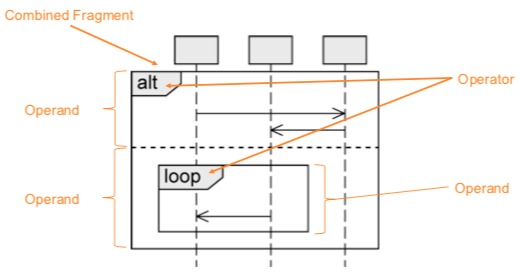
Branches & loops
alt:
- alternative sequence
- like a switch statement, with guards selecting the path to be executed
- guards modeled in square brackets, default true
- guards have to be disjoint so that behavior is deterministic!

opt:
- optional sequence
- like an if without an else
- actual execution depends on guard
- exactly one operand

loop:
- repeated sequence
- min/max number of iterations -
(min..max)or(min, max). default(*), no upper limit. - guard evaluated when min number of iterations took place, checked on each iteration. loop quits if false.

break:
- exception handling
- one operand with a guard. if true:
- interactions within operand are executed
- remaining operations of surrounding fragment don’t run
- interaction continues at next higher level fragment (so like you skip a level)

Concurrency and order
seq:
- weak sequencing, default order of events
- can’t skip around on the same lifeline
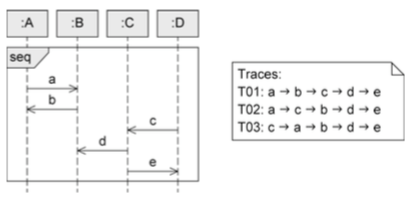
strict:
- strict order
- fixed sequence of events across lifelines
- order of events on different lifelines between different operands is significant
- messages in operand higher up on vertical axis are always exchanged before the ones that are lower
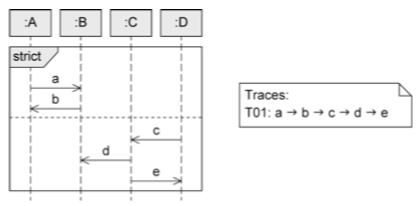
par:
- concurrent interaction
- relax chronological order between messages in different operands
- restrictions in each operand have to be respected
- order of different operands is irrelevant
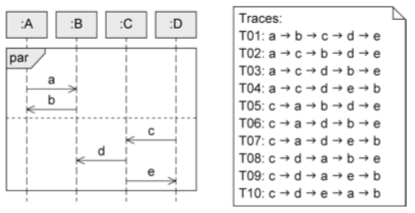
critical:
- atomic interaction
- make sure that certain parts of interaction aren’t interrupted by unexpected events
- always has to be in that order
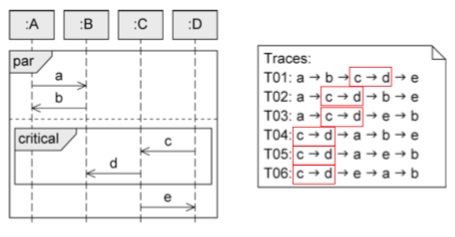
Filters and assertions
ignore:
- irrelevant interaction
- messages can occur at runtime but don’t have other significance
- one operand, irrelevant messages in curly brackets after keyword
ignore
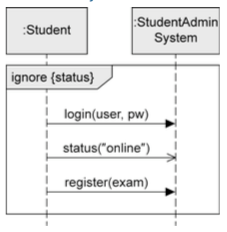
consider:
- relevant interaction with a particular importance
- one operand. “dual” to ignore fragment
- considered messages in curly brackets
- and yes, you can use
ignoreinstead ofconsiderand vice-versa
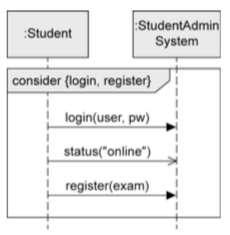
assert:
- asserted interaction
- mandatory interactions. the model is complete. can’t have any deviations.
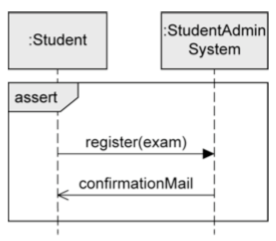
neg:
- invalid interaction
- describe situations that must not occur
- depicting relevant but incorrect sequences
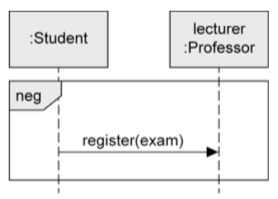
Further language elements
time constraints:
- point in time for event occurrence:
after(5sec),at(12.00) - time period between two events:
{lower..upper} now: current time- duration: calculation of duration of message transmission
Interaction reference:
- integrates one sequence diagram in another sequence diagram
- define with
sd namein the corner, then use the name in the diagram withrefin the corner
Gate:
- allows to send and receive messages beyond boundaries of interaction fragment
state invariant:
- asserts certain condition has to be true at certain time
- if state invariant is not true, either model or implementation is wrong
- notations:
